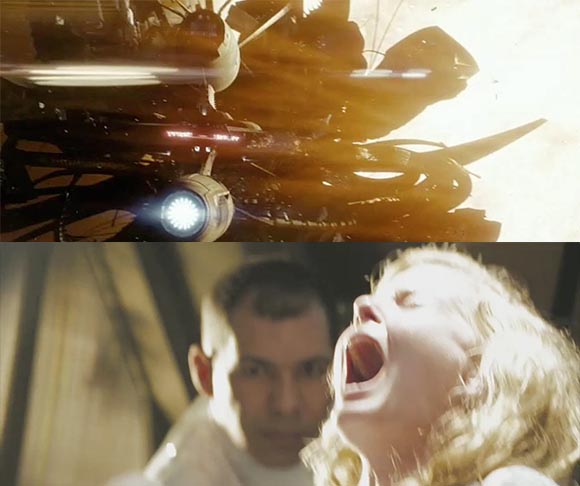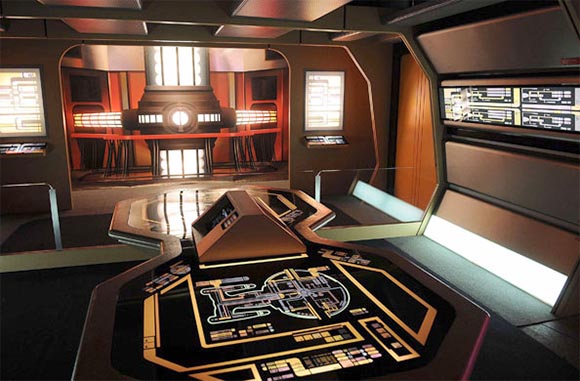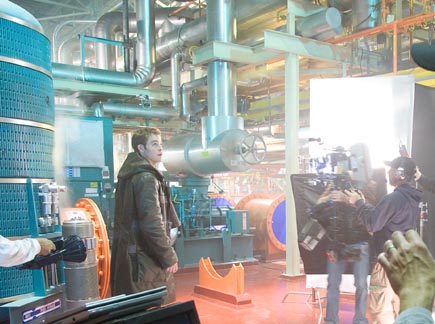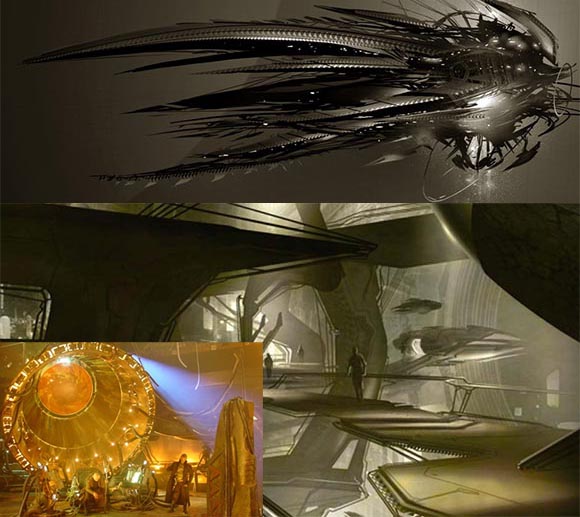I recently finally came about to watch that Star Trek Special Edition Blu-Ray. I think I bought it around last Christmas or so. It was long overdue. Like most people I like the film very much. I think that it is one of the best Star Trek movies. But that doesn’t say much since the Star Trek movies are generally pretty weak compared to the series.
There is one thing I really like about the movie and one thing I really dislike about it. Both are actually connected to… video-games! So I wanted to share with you those two little observations real quick:
Human Sci-Fi
Let’s admit it: Sci-Fi is generally a pretty nerdy thing. It’s made for a very special kind of audience and many Sci-Fi movies concentrate on the expectations of just that audience. They are full of cryptic tech, special effects, futurism, epic fights, space things, aliens, etc. What I really like about the Star Trek movie is that JJ and the others specifically set out to make a movie that would be actually watchable by everyone. They still have the usual Sci-Fi tropes. But at the heart of the movie is a drama very much about humans. It’s evident in the very first scene. The brave starfleet ensign is about to ram his spaceship against a huge evil alien ship that came out of a black hole – that’s the traditional Sci-Fi part and it’s done well. But in the midst of it his wife is having their child. The scene is also about this young couple, the future of their child and the fact that the new family is destroyed by this very event. This second layer of drama elevates the plot beyond superflous geekyness. It creates a story that can be watched and enjoyed by everyone. This is why my girlfriend really loved the movie. In the audio commentary, JJ and the others pretty much admitted that this was specifically one of the main goals for this move. I’m glad they succeeded.

It’s geeky but it’s universally meaningful.
There is lesson in there for games too. Games are like Sci-Fi. They are niche and geeky. In order to open them up to other audiences we need to find ways on how to add that second layer to them. This doesn’t mean we have to sacrifice the geekyness. But we shouldn’t be satisfied by it alone.
Environmental Storytelling
Compared to how well that part of the movie was, I was very disappointed by many of the sets. For example, it seem like the team decided to shoot some of the interiors of the ship in factories instead on the stage. The idea was to create a sense of industrial purposefulness instead of the usual, sterile look of the series. The environments certainly do look very different. But they just don’t look like interiors of a ship AT ALL. Typical for a factory, they have a lot of very heavy and generously sized equipment. Lots of spacious voids. There is rarely a ceiling. the places where people can interact with the machinery are very far apart. The interaction is mostly mechanical – valves and handles. The template for Star Treks ships are naval vessels, especially submarines. If you have ever been to one, they don’t look like this AT ALL. They are very cramped. They have panels, displays and little compartments to store things EVERYWHERE. On a ship every volume is precious. It takes material to define a volume. Material is heavy. Heavy ships move slowly and use a lot of energy. If you look at something like the ISS, it becomes even more evident. Every surface in the entire station has a function. No space is wasted.
What the set designers seem to have failed to understand is that there are various flavors of purposefulness. The industrial flavor just clashes with the idea of a space ship.
But there is more. It often occurred to me that the warp core in The Next Generation was an ingenious piece of set design. It was a very clear layout. It looked big and powerful. Most importantly it provided different ways for actors to interact with the machine in a way that is easily understood by the audience. You never doubted that Geordi and Data are actually controlling the Warp Core from there.

Set design done right.
Not so much in the new Star Trek. Scotty is aimlessly running around in an amorphous maze of pipes, handrails and gantry-ways. The set conveys no sense of size, layout or relationship to the actors. It fails at contributing to the story. It fails to be a place.

The actors of Star Trek seem to be lost in space.
And the engineering room of the Enterprise is not the only problem. The Romulan ship is even worse. Because that set was actually made on a stage. The story says that the Romulan ship is supposed to be a mining ship and it just doesn’t look like it at ALL. It’s a huge, dark cave randomly filled with curved platforms and dangerous looking things. The entire Ships looks evil but horribly impractical. There is just NOTHING about it that says anything else than: these are bad guys. And as with the enterprise, the layout is completely obscure. There is no sense of direction, no sense of how one scene is related to the next one. It’s just a bunch of evil looking backdrops. It’s a wallpaper.

The evil ship of evilness… and yeah, mining or something.
Here is a thing where movies can learn from games. In games, the environment is often the central way of conveying meaning. You don’t think about it but most of the time spend on making a game is set design. It’s building all the pieces of environment, it’s putting them together, coming up with ways that players can travel trough them and explore them. It’s making sure the environments have the desired functions, that players can interact with them in a meaningful way. It’s making sure players can read and understand the environments. Finally, it’s making sure the environments themselves reflect the setting and the storyline of the game.
That’s why there is a tremendous amount of parallels between Architecture and Game Design. Telling stories using the Environment is an art form that games inherited from architecture and set design. But it is also one they completely taken over and pushed far beyond of what has been done before. Especially movies makes can learn a lot from them. And looking at Star Trek, they need to.
There is more to the movie but I think I said enough. I’m interested in what you thought of if.






I agree with your assessment of architecture and how it’s important to game design. It’s always great when a game has architecture that was clearly designed with functionality in mind, and not just flavor.
i have also watched that movie and i was also impressed, it was great one full-on entertainment.
[...] to start, let’s have a post from one of them – like Krystian Majewski’s terrific piece on the most recent Star Trek film and how and why it compares to videogames. Meanwhile, George Kokoris’ fantastic post about [...]